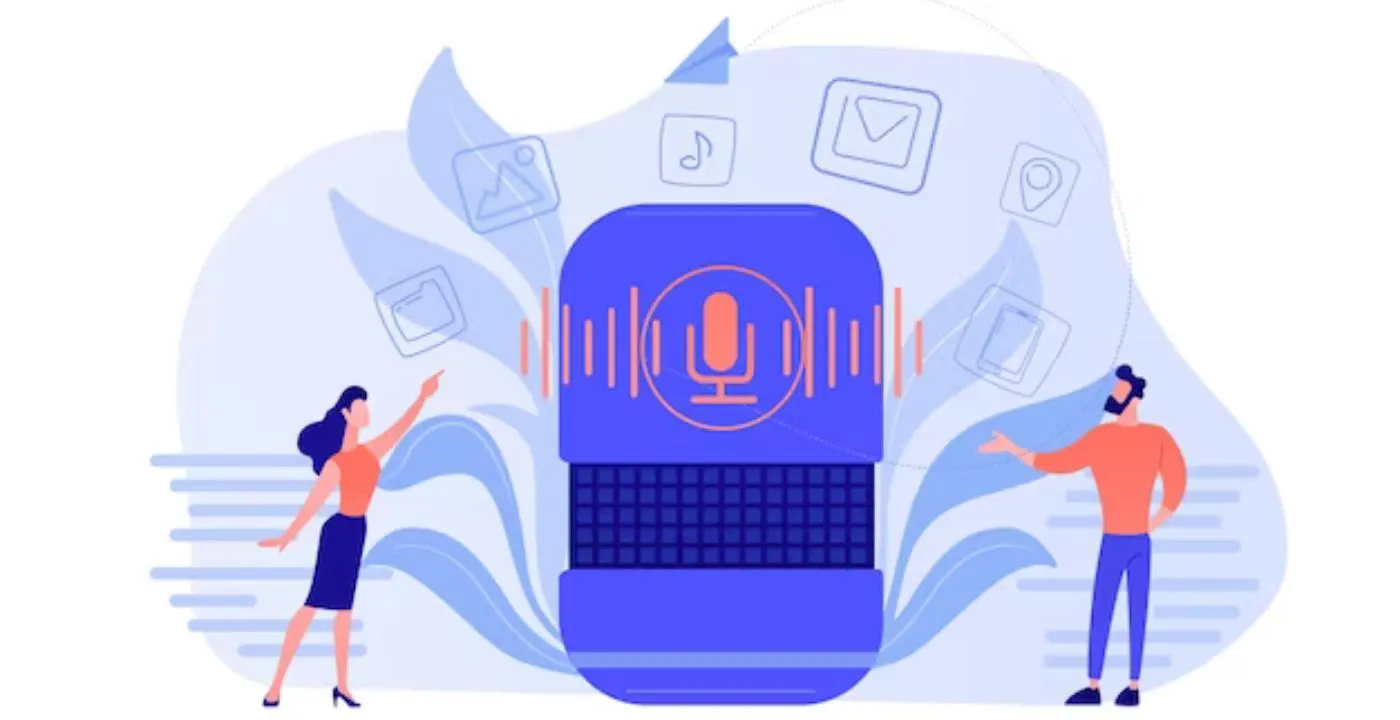The field of voice technology has been researched by artificial intelligence (AI), which is transforming human-machine interaction. AI voice trends have emerged as an important component across multiple sectors, providing users with ease of use, effectiveness, and a smooth interaction. In this article, we will explore the introduction, current situation, how to use AI voice trends, business impact, problems, and future prospects of AI voice trends.
What is AI Voice Trends?
Artificial intelligence voice technology is the combination of voice-activated devices and artificial intelligence, enabling speech-based technological interaction. The ability of AI voice trends to understand and react to human languages is important because it makes technology more easily accessible and user-friendly.
Current State of AI Voice Trends
AI Voice technology is still developing quickly, with a focus on improving ability to express, naturalness, and customization. A trend toward more human-like voices appears in the use of deep learning techniques to improve pronunciation, emotion, and context awareness. Customizable voices are becoming more popular, enabling companies and consumers to develop unique and brand-specific AI personalities. Furthermore, there is a rising concentration on privacy, security, and the ethical usage of AI voices as voice assistant integration across a range of devices and businesses continues to develop.
How to Use AI Voice Trends?
Natural language processing (NLP), voice synthesis, and speech recognition are complex processes at the core of AI voice technology. Following components enable accurate understanding and processing, and response to spoken languages.
Understanding Your Needs
Determine the particular needs and preferences of your intended audience. Recognize their languages preferences, how they use voice technologies, and the situations in which they will communicate with artificial intelligence voices.
Select Your Method
There are lots of ways to do AI voice trends, each having pros and cons of its own:
Make use of the current AI voice platforms:
Voice assistants: Pre-built voice models are provided by voice assistants such as Alexa, Siri, and Google Assistant, which can be further modified using user-supplied text and audio data.
Software for text-to-speech (TTS): A number of applications translate text to speech and let you record your own artificial intelligence sounds. Some are Resemble, Murf, and Speechify.
AI voice generator applications: You may create different character voices and alter voice in real time using mobile apps such as Voicemod and MorphVOX.
Customization and Personalization
Use customizable AI voice options to develop a distinctive voice that fits your brand or targets an audience. Adjust the voice attributes, pronunciations, or tones to the user’s preferences and the intended context.
Check the computer-generated voice for expressiveness, correctness, and naturalness.
To acquire the desired tone and style, fine-tune the voice quality by adjusting parameters and settings.
Pitch correction, voice emotion control, and other customizing features are available on certain platforms.
Integrating Different Platforms
Use speech AI technology across a range of platforms and sectors where it can be beneficial. Ensuring smooth integration and operation could be used to customer service, education, healthcare, IoT devices, or entertainment.
Ethical Implementation:
Make an intentional attempt to keep away of biases, presumptions, and restrictions when developing AI voice solutions. Aim for equity and fairness in voice interaction.
Continuous Learning and Adaptation:
Keep updated of new developments and feedback from users. AI voice technology should develop by collecting new technologies, adjusting to changing user demands, and learning from experience. Continuous learning enhance How to use AI Voice Trends more effectively.

How AI Voice Trends Impact Business?
Improved Customer Experience: Using AI voice technology results in simplified, individualized, and simple customer interactions. Voice-activated customer service agents answer calls more quickly and efficiently while providing 24/7 support.
Operational Efficiency: AI voice solutions increase operational efficiency by automating a variety of processes that would otherwise need manual labor. Voice-activated systems reduce wait times and save resources in sectors such as healthcare and manufacturing.
Enhanced Accessibility: Voice technology promotes participation and grows the consumer base by reaching a broader audience, including individuals with disabilities or problems with language.
Brand Differentiation: Businesses may differentiate themselves from competitors and create a unique identity by using customizable AI voices to develop distinctive brand identities.
Marketing and Sales: Targeted and customized marketing are made possible by AI voice technology, which improves marketing efforts. Voice search optimization or voice-enabled shopping experiences boost sales and engagement in e-commerce.
Problems Generated by AI Voice Trends
Ethical Challenges: AI voice trends might strengthen biases or misconceptions found in the training data for the models. It is crucial to ensure equity, equality, and moral behavior in AI development.
Accuracy and Reliability: Artificial intelligence voices may have trouble understanding complex queries, accents, or languages. To ensure customer happiness, accuracy and dependability must be continuously improved.
Lack of Context Understanding: AI voices may have trouble understanding context, which could cause them to misread user intent or give irrelevant answers. Improving contextual comprehension is essential for deeper connections.
Over-reliance on technology: If AI voice solutions are used too much, it could lead to a decrease in human engagement and, in certain cases, separation in situations when human empathy and understanding are essential.
Future of AI Voice Trends
The development of AI voice trends in the future will be determined by seamless integration and hyper-personalization. AI voices will get increasingly human-like in their emotional complexity, situational awareness, and variety of languages. Customization will grow rapidly, enabling people and companies to develop distinctive, brand-specific voices for improved interaction. AI developments will cross boundaries and penetrate every aspect of daily life, including homes, offices, cars, and more, creating a more convenient and interconnected world. Furthermore, when these developments happen, strong privacy protections and ethical considerations will also change to ensure that AI voice technology is used ethically and properly.
Conclusion
How to use AI Voice trends have changed the way how we engage with technology by providing efficiency and convenience in a variety of applications. It is essential to understand the development, workings, consequences, and challenges linked to these patterns in order to fully utilize their future potential. AI voice technology is still developing, bringing with it both new possibilities and difficulties. The direction of human-machine contact in the future will be determined by how well we embrace these trends and manage their complexity.




